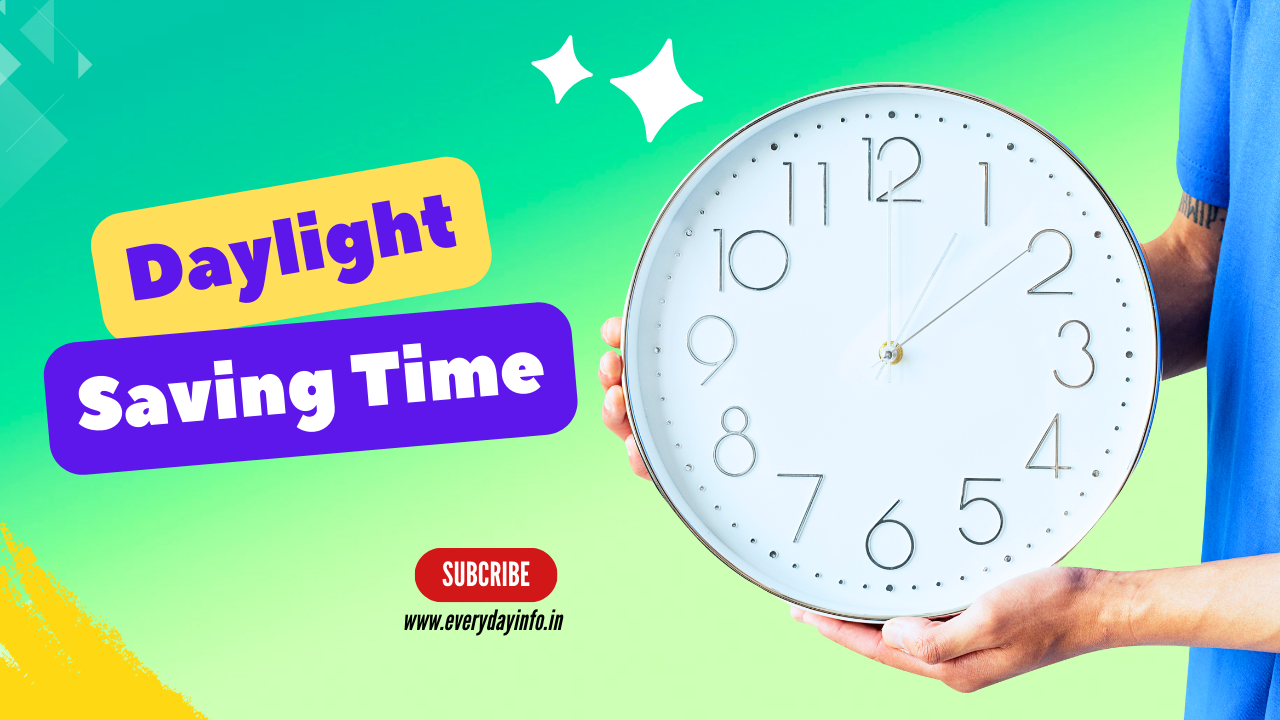Daylight Saving Time (DST) is generally an exercise of resetting the clock forward by one hour during spring (the warmer months of the year) and back one hour during autumn or fall (the cooler months).
We can see this moon lights practice in generally spring and autumn. The main purpose of Daylight-Saving Time is to utilize the natural daylight for better use and conserve energy.
Daylight Saving Time
It is often referred as “springing forward” when the clock is set forward during spring. In autumn, when it is back one hour then it is called “falling back”. This daylight idea generally saves energy and results in longer evenings with more daylight.
Not all countries observe this DST. Some countries do not choose to use daylight saving time in their county. Some other countries may have some other rule to deal with this time changes.

The History behind Daylight Saving Time :
The history of Daylight-Saving Time (DST) is old. The main purpose of this DST is to make better use of daylight to conserve more energy.
In early 1784, Benjamin Franklin suggested the DST concept first. He suggested that people could reduce candle usage by waking up in the morning earlier. In this way people can use more the natural daylight.
In 1916, this modern DST concept implementation started during World War I. Germany was the first country who officially adopt this Daylight Saving Time concept to conserve fuel and energy. The United Kingdom and the United States also started implementing this concept very soon.
Again, during World War II, some other countries also started implementing this Daylight Saving Time concept. In United States, with the Energy Policy Act of 2005, Daylight Saving Time start date and end date were adjusted again.
The Mechanics of the Clock: Springing Forward and Falling Back:
The main mechanism of Daylight Saving Time (DST) is to adjust the clock forward and backward at specific times of the year.
Springing Forward –
In the spring, people set clocks forward by one hour around March or April. This time change varies by country or region. Therefore, people adjust the clock 3:00 AM at 2:00 AM. People effectively skip one hour on this day.
Falling Back –
In fall, people generally set clocks back one hour around October or November. Therefore, people adjust the clock 1:00 AM at 2:00 AM. People effectively repeating one hour on this day. This time people plan to “fall back” and make better use of daylight during the shorter days of fall and winter.
For digital and automated systems it is relatively easy and simple process to adjust the clock. But for human, they may experience challenges in adjusting their internal body clocks.
Energy Conservation or Myth?
The energy conservation benefits of Daylight Saving Time (DST) is still remains unsettled. Many people argue that Daylight Saving Time reduces the need for artificial lighting and energy consumption. They believe strongly that longer daylight in the evening indorses energy efficiency.
However, critics counter that this energy efficient gains could be sometimes increased energy use in other areas such as air conditioning or other electronic devices. Also, some people are debating on disrupted sleep patterns and productivity. Despite ongoing research, the overall impact of DST on energy conservation remains a complex and inconclusive topic.
Impact on Daily Life and Productivity :
There is no doubt Daylight Saving Time (DST) significantly impacts daily life and productivity. The sudden time changes affecting alertness, disrupt sleep patterns and workplace efficiency. Also varying daylight hours make impact on traffic and travel. This extended evenings during Daylight Saving Time helps to promote outdoor activities.
Public Opinion and Legislation :
This Daylight Saving Time concept is heavily dependent on Public opinion and legislation. This extended evening daylight have both negative and positive side of view in common people. Also this legislative decisions sometimes made at the national or regional level which determine whether to maintain, adjust, or eliminate DST.
In conclusion, the debate is still going on whether Daylight Saving Time is really contributing to help energy conservation or it is just a myth. This debate is still remained inconclusive.
Public views on Daylight Saving Time (DST) vary, with some people liking longer evening daylight and others not. Government choices decide if DST stays, changes, or stops. Recent moves globally rethink DST’s effects on energy, the economy, and well-being. Regions may coordinate for consistency. The ongoing discussion shows DST’s impact on daily life.
See More – Abortion is a constitutional right of women, this breakthrough decision made history
